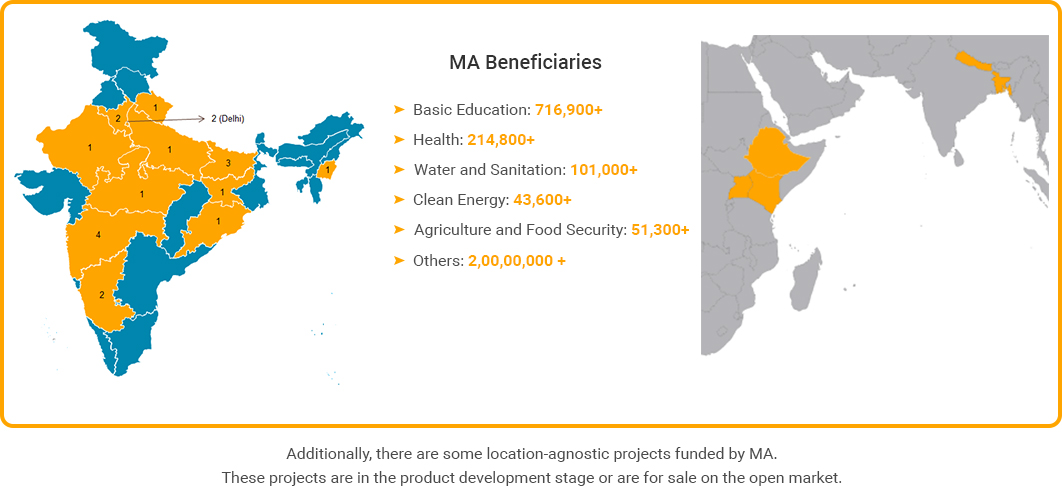
The Millennium Alliance aims to create significant developmental impact at the base of the pyramid population.
The Alliance has defined illustrative indicators in each of its focus sectors that would also serve as yardsticks to measure the success of the Program.
The Millennium Alliance aims to create significant developmental impact at the base of the pyramid population.
Some illustrative examples of the kinds of development impacts that the Alliance seeks to achieve for priority sectors include, but are not limited to, the following:
- Basic Education :
- Improved reading abilities among primary grade children
- Increased number of primary grade children reading at grade-appropriate level.
- Water and Sanitation
- Increased number of people gaining access to an improved drinking water source
- Increased number of people gaining access to an improved sanitation facility
- Health
- Increased use of effective and innovative health systems solutions
- Increased number of innovative tools, technologies, or practices employed to improve access and quality of health services for vulnerable populations
- Family Planning and Reproductive Health
- Increased modern contraceptive rate
- Maternal and Child Health
- Decreased under five mortality rate
- Decreased infant mortality rate
- Decreased maternal mortality ratio
- Agriculture/Food Security
- Increased farmer incomes as a result of applying new technologies or management practices
- Clean Energy/Climate Change
- Greenhouse gas emissions avoided, measured in metric tons of CO2e
- Increased renewable energy capacity added
- Increased energy savings achieved (measured in kilowatt hours)
- Increased number of innovative clean energy tools, technologies and methodologies developed, tested and/or adopted
- Increased number of clean energy enterprises with improved business operations
- Increased number of beneficiaries with renewable energy services in off-grid villages